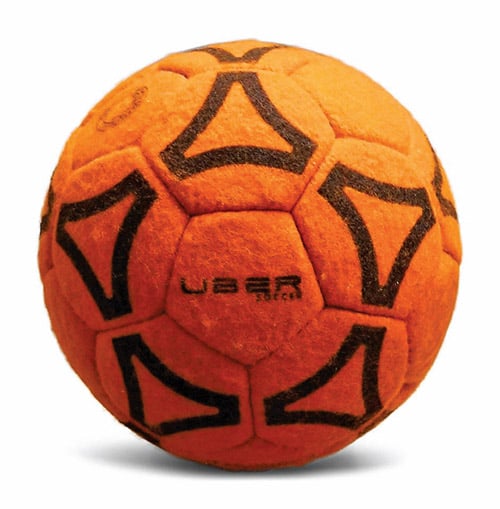

If there’s one common denominator among official sports, it’s stability. Stability in equipment and environment choice are qualities that balance games, so each person is rewarded based largely on his or her merit. Without stabilizing factors, games can falter or even fall apart when coupled with uncontrolled circumstances.
The beauty of soccer resides in its universality; not much equipment is necessary other than a ball and some indication of a goal. These requisites are minimal, yet achieving the holy grail of stability demands precision in the equipment.
If you’re a yeshiva student or parent in New York or New Jersey, there’s a fair chance that you know about the Metropolitan Yeshiva High School Athletic League (MYHSAL) indoor soccer program. From my experiences, and those of my peers, it seems that the league’s equipment does not conform to the standards of traditional indoor soccer; however, minor changes would help make the game more controlled, and thus more competitive and exciting, both for players and observers.
I’ve played soccer for the vast majority of my life, enjoying and studying the complex game for years. I wouldn’t call myself a soccer expert, nor am I all that skilled, but in my earlier years of soccer, I found that skill development and team strategy were important parts of the game, and those elements are not fully valued in the yeshiva league’s version of it. It could be argued that the yeshiva league game better resembles pinball; the soft, fabric-like skin on the ball causes it to slide around frenetically, and its bounciness makes it fly erratically.
In standard indoor soccer, these issues are mitigated by a smaller ball that is neither soft nor bouncy, facilitating a more predictable and efficient mode of playing. This game is called futsal, the only official type of soccer played by indoor soccer leagues. When formal leagues for indoor soccer were created, many problems arose with regard to how the game should be played. And, after much deliberation and testing, a five-a-side game called futsal was created, which used denser, smaller and low-bounce balls to better suit indoor courts. “Since our league plays with tactics that are similar to those of futsal, using a ball that removes important elements, namely, ball control … limits the quality of play,” said Logan Singman, former head coach of the Kushner Junior Varsity and Varsity soccer teams.
As seen in MYHSAL games, since the futsal ball is not used, what results is an imbroglio of a game in which you can barely keep track of the ball. Players run around as the ball bounces back and forth—it’s like a kindergarten game in overdrive. There’s no need to pass or even dribble well. All the game entails is constant running and kicking until the ball ends up in one of the nets. Even worse, because of the messy gameplay, strength is frequently rewarded over skill. Oftentimes, the game does not necessitate any talent; rather, it can favor the lucky players who happen to hit the ball at the right time and place with the most muscle.
Unfortunately, yeshivas have not subscribed to the proven methods of futsal, either because they don’t know of them or because they haven’t fully appreciated how important it is for players to enter the league building on skills they have developed beforehand. Athletics are a key component to the high school experience and steps must be taken to ensure efficiency. Just as education should be held to a high standard, so too should our recreational activities. If the MYHSAL at least required each school to use a standard size 4 futsal ball for each game, the playing experience would be immediately improved. The frequency of passing and dribbling would increase, thereby rewarding those with specialized skills and balancing the overall gameplay.
There is a common misconception that if you throw some kids on a court with a ball and two goals, they are playing indoor soccer. This concept is more suited to younger players and is definitely not an accurate view of the MYHSAL. However, according to Singman, the ball complication has lingered due to “a lack of awareness combined with the yeshiva league being very slow to change.” Though he does contend that over his years as coach, “the quality of play has improved significantly.” Singman believes that “the league committing to better equipment will lead to a safer game that better resembles soccer.” Without a doubt, the MYHSAL has pushed to improve the indoor soccer program, and credit must be given to such efforts. A change in ball type would further stabilize inconsistencies within the game and make it almost fully adhere to the guidelines of futsal.
True soccer stipulates complete stability; the fairness of games is therefore contingent on whether the equipment is precise and adaptive to its environment of play. The yeshiva league indoor soccer program has been a subject of frustration for players and coaches alike and while changes may be difficult to enact due to funding issues or league politics, soccer is an important activity for some students like me and we want our voices heard. For a beautiful game that we love so much, it’s time to unlock its potential.
By Josh Gindi
Josh Gindi is a rising senior at Rae Kushner Yeshiva High School in Livingston and is interning at The Jewish Link this summer.








